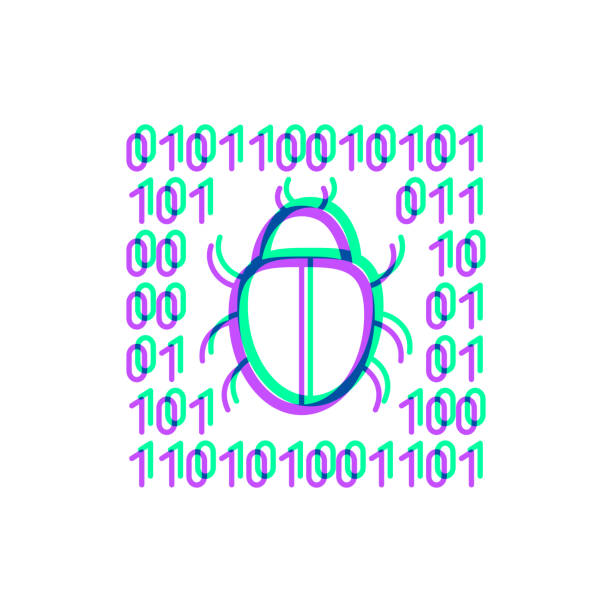The modern world runs on computers, and computers run on circuits. At the heart of every computational process lies the intricate dance of electrons, guided by the laws of physics. Understanding the physics of computer circuits means exploring how electric charges move, interact, and perform logical operations that form the foundation of digital technology. It is a field where the principles of electromagnetism, quantum mechanics, and solid-state physics converge to create the devices that define our digital age.
Computer circuits, whether in a massive data center or a smartphone processor, are physical systems governed by the same universal laws of nature that govern the stars. Every logical operation, memory bit, and software instruction ultimately reduces to physical interactions—flows of electrons through materials and the manipulation of electrical potentials. This article provides an in-depth exploration of the physics that makes computer circuits work, from basic electrical principles to advanced quantum effects that define the future of computing.
The Electrical Foundations of Computer Circuits
At the most fundamental level, a computer circuit is an electrical network designed to manipulate the flow of electric current. The movement of charge carriers—typically electrons—through conductive materials forms the basis for information processing. The core principles that govern this behavior come from electromagnetism, one of the four fundamental forces of nature.
Electric current, measured in amperes, is the rate of flow of electric charge through a conductor. Voltage, measured in volts, represents the potential energy per unit charge, often described as the “pressure” that drives electrons through a circuit. Resistance, measured in ohms, quantifies how much a material opposes this flow. These relationships are defined by Ohm’s Law, which states that the current through a conductor between two points is directly proportional to the voltage across those points and inversely proportional to the resistance.
In a simple circuit, electrons flow from a point of higher potential to a point of lower potential through a conducting material, typically copper. However, computer circuits are far more complex, comprising millions or billions of interconnected elements that control and modulate current flow in precise ways. The entire operation of a digital processor depends on managing these tiny currents to represent binary states—zeros and ones.
Binary Logic and Physical Representation
Digital computers operate on the principle of binary logic, where information is encoded as two distinct states: on and off, or 1 and 0. These states correspond physically to voltage levels or current flows within a circuit. For instance, a high voltage may represent a binary “1,” while a low or zero voltage corresponds to a binary “0.”
The challenge of computer engineering is to construct reliable physical systems that can switch between these two states rapidly and accurately without significant error. This reliability comes from the physics of semiconductors, materials that can conduct electricity under certain conditions but act as insulators under others. The discovery and understanding of semiconductor behavior made it possible to build the transistor, the fundamental component of modern circuits.
Each binary operation—addition, subtraction, comparison, or memory storage—ultimately depends on controlling how electrons move through materials. Logic gates, the building blocks of digital computation, use combinations of transistors to implement Boolean algebra. AND, OR, and NOT gates, for example, correspond to specific physical arrangements that control the flow of current according to input voltages.
Semiconductors and the Birth of the Transistor
The transistor is one of the most revolutionary inventions in human history. It replaced the bulky, inefficient vacuum tubes that characterized early electronic computers and enabled the miniaturization that defines modern technology. The transistor operates on the principle of controlling electrical current in a semiconductor material.
Semiconductors such as silicon and germanium occupy a middle ground between conductors and insulators. Their ability to conduct electricity depends on external conditions like temperature, light, and, most importantly, the introduction of impurities—a process known as doping. Doping adds small amounts of other elements, creating regions with excess electrons (n-type) or with missing electrons, known as holes (p-type).
When n-type and p-type regions are joined, they form a p–n junction, a crucial structure in transistors and diodes. At this junction, an electric field forms due to the migration of electrons and holes, creating a depletion region where current does not flow freely. By applying a voltage across this junction, one can control the movement of charges through the material. This controllability allows the transistor to act as a switch or an amplifier.
In a field-effect transistor (FET), the type most commonly used in integrated circuits today, a voltage applied to the gate terminal modulates the conductivity between the source and drain terminals. This action enables the transistor to turn on or off, representing binary states within a digital system. Millions or billions of such transistors can be packed onto a single microchip, each switching billions of times per second to execute complex computations.
Quantum Mechanics in Semiconductor Physics
While classical electromagnetism explains the macroscopic behavior of electric current, the operation of semiconductors and transistors requires quantum mechanics. In quantum physics, electrons do not move through materials like tiny billiard balls; they behave as waves with discrete energy levels.
The band theory of solids arises from quantum mechanics and explains why materials behave as conductors, insulators, or semiconductors. In a solid, atoms are arranged in a crystal lattice, and their atomic orbitals overlap to form continuous bands of energy levels. The highest occupied band at absolute zero temperature is called the valence band, while the next higher unoccupied band is the conduction band.
The energy gap between these bands—the bandgap—determines the material’s electrical properties. In conductors, the valence and conduction bands overlap, allowing free movement of electrons. In insulators, the bandgap is large, preventing electrons from easily jumping to the conduction band. Semiconductors lie in between; they have a moderate bandgap that allows electrons to be promoted to the conduction band by thermal energy or applied voltage.
Doping modifies the position of the Fermi level, which represents the average energy of electrons in the material. In n-type semiconductors, doping adds donor states near the conduction band, while in p-type materials, acceptor states near the valence band create holes. These microscopic adjustments control how and when electrons can move, enabling the precise behavior required for transistors and diodes.
Electric Fields and Charge Transport
Charge transport in computer circuits depends on electric fields, which drive the motion of electrons and holes. When a voltage is applied across a semiconductor device, it creates an electric field that exerts a force on the charge carriers. Electrons accelerate in response to this field but are constantly scattered by impurities, lattice vibrations, and other electrons, leading to a net drift velocity.
This microscopic behavior gives rise to macroscopic electrical properties such as current density and resistivity. The relationship between current and electric field in a semiconductor is more complex than in a simple metal because the number of free carriers and their mobility depend strongly on temperature and doping.
In transistors, electric fields are used not only to drive current but to control it. In a metal-oxide-semiconductor field-effect transistor (MOSFET), the gate voltage induces an electric field that either attracts or repels charge carriers in the channel, turning it from a conductive state to an insulating one. This ability to control current with voltage underlies the logic of digital circuits.
Logic Gates and Physical Implementation
At the logical level, computer circuits perform operations defined by Boolean algebra. Each logic gate corresponds to a physical configuration of transistors and other components. An AND gate, for instance, produces a high output only if both inputs are high, while an OR gate produces a high output if at least one input is high.
In complementary metal-oxide-semiconductor (CMOS) technology—the dominant design in modern integrated circuits—each logic gate uses pairs of n-type and p-type transistors. The complementary arrangement ensures that current flows only during switching, minimizing power consumption. When the input is low, one set of transistors conducts, while the other remains off; when the input is high, the roles reverse. This design allows CMOS circuits to operate efficiently and reliably at nanometer scales.
The output of one gate serves as the input to others, creating complex networks that perform arithmetic, store data, and control operations. These interconnected gates form the logic units, memory cells, and communication pathways that make up a microprocessor. The physical realization of logic depends on the predictable, repeatable movement of electrons through semiconductor materials—a triumph of applied physics.
Power, Heat, and Energy Dissipation
As electrons flow through circuits, they encounter resistance and lose energy as heat. The management of power and heat is one of the greatest challenges in computer engineering. The energy dissipated in a circuit is given by the product of voltage, current, and time. In dense integrated circuits containing billions of transistors, even small inefficiencies lead to significant heat generation.
The physics of heat transfer becomes crucial in this context. Thermal energy in a chip is carried away primarily through conduction, convection, and radiation. The microscopic origin of heat lies in lattice vibrations known as phonons—quantized mechanical oscillations within the crystal structure. As electrons scatter and transfer energy to the lattice, the chip’s temperature rises.
To maintain performance and prevent damage, modern processors use advanced materials and cooling systems. High thermal conductivity materials such as copper and diamond-like carbon layers improve heat dissipation. Additionally, transistor designs that minimize leakage currents and operate at lower voltages reduce power consumption. The balance between computational power and thermal management is an ongoing area of research at the intersection of physics and engineering.
Electromagnetic Interference and Signal Integrity
Computer circuits are not isolated systems; they exist within environments filled with electromagnetic fields. As current flows through conductors, it generates magnetic fields that can influence neighboring wires or components. Similarly, external electromagnetic radiation—from radio transmitters, power lines, or even other parts of the same circuit—can induce unwanted currents and noise.
The study of electromagnetic interference (EMI) and signal integrity deals with how these effects can degrade circuit performance. Physics provides the tools to analyze and mitigate such problems using Maxwell’s equations, which describe how electric and magnetic fields interact and propagate.
In high-speed digital circuits, the finite propagation time of signals along conductors introduces additional challenges. Wires behave as transmission lines, where signals can reflect, attenuate, and distort due to impedance mismatches. Engineers use principles of wave propagation and boundary conditions derived from electromagnetism to design circuits that preserve signal fidelity. Shielding, grounding, and differential signaling are practical implementations of physical principles to maintain accurate communication within electronic systems.
Quantum and Thermal Limits to Miniaturization
As transistors have become smaller, approaching nanometer scales, the laws of classical physics give way to quantum effects. The behavior of electrons in such confined geometries cannot be fully described by simple circuit models. Quantum tunneling, in particular, poses a fundamental limit. When the insulating barrier between two regions becomes thin enough, electrons can “tunnel” through it, causing leakage currents even when a transistor is supposed to be off.
Thermal noise also becomes significant at small scales. The random motion of electrons due to thermal energy introduces fluctuations in voltage and current that can interfere with logic operations. The minimum energy required to switch a bit of information is limited by Landauer’s principle, which connects information theory to thermodynamics. It states that erasing one bit of information dissipates at least ( kT \ln 2 ) joules of energy, where ( k ) is Boltzmann’s constant and ( T ) is the temperature in kelvins.
These physical limits motivate the exploration of new materials and computing paradigms. Techniques such as quantum computing, spintronics, and neuromorphic architectures aim to transcend the traditional boundaries of transistor-based logic by exploiting quantum states, electron spin, and analog computation.
The Role of Materials Science in Circuit Physics
The success of computer circuits depends not only on electrical design but also on the materials from which they are made. Silicon has been the dominant semiconductor for decades due to its abundant availability, stable oxide (silicon dioxide), and excellent electronic properties. However, as device dimensions shrink, new materials are being introduced to overcome the limitations of silicon.
Compound semiconductors such as gallium arsenide (GaAs), gallium nitride (GaN), and indium phosphide (InP) offer higher electron mobility and faster switching speeds, making them suitable for high-frequency applications. Two-dimensional materials like graphene and transition-metal dichalcogenides exhibit extraordinary electrical and thermal properties at atomic thicknesses, opening possibilities for future nanoscale transistors.
Dielectric materials are equally critical. The insulating layers that separate conducting regions must prevent leakage while allowing electric fields to control charge flow effectively. High-k dielectrics, which have higher permittivity than silicon dioxide, have become standard in advanced CMOS technologies. These materials allow strong gate control without requiring extremely thin physical layers, thereby reducing tunneling currents.
Interconnect materials—the microscopic wires that link transistors—are another crucial component. Copper replaced aluminum in most circuits due to its lower resistivity, but at the nanometer scale, even copper faces challenges from electromigration and surface scattering. Researchers are investigating alternatives such as carbon nanotubes and graphene ribbons, which could carry current with lower resistance and higher thermal stability.
The Physics of Data Storage
Computation would be meaningless without memory, and the physics of data storage is an essential part of computer circuitry. In dynamic random-access memory (DRAM), each bit is stored as a charge on a tiny capacitor. The presence or absence of this charge represents binary information. Because capacitors gradually lose charge over time, DRAM requires periodic refreshing.
Static random-access memory (SRAM) uses flip-flop circuits composed of transistors to store bits more stably, though at the cost of greater space per bit. Flash memory relies on the quantum mechanical phenomenon of tunneling to trap electrons in an insulated region, maintaining the stored state even without power.
Magnetic storage devices, such as hard drives, exploit the alignment of electron spins in magnetic domains to represent bits. The physics of magnetism—originating from quantum spin and exchange interactions—allows stable and non-volatile storage. Similarly, emerging technologies like magnetoresistive RAM (MRAM) and phase-change memory (PCM) use quantum and thermodynamic effects to store information more efficiently.
The Future: Quantum and Beyond
As the miniaturization of transistors approaches physical limits, the future of computing will increasingly rely on deeper principles of physics. Quantum computing, for example, uses quantum bits or qubits, which can exist in superpositions of states. Instead of representing merely 0 or 1, a qubit can represent both simultaneously, allowing exponential growth in computational power for specific problems.
The operation of a qubit depends on delicate control of quantum coherence—the preservation of phase relationships between quantum states. This requires extreme isolation from environmental noise and precise manipulation using electromagnetic fields. The underlying physics involves phenomena such as entanglement, where two particles share correlated states regardless of distance, and quantum tunneling, used in Josephson junctions and superconducting qubits.
Spintronics, another emerging field, seeks to use the spin of electrons rather than their charge to encode information. Spin-based devices could reduce power consumption and improve speed by minimizing the movement of charges. Similarly, photonic circuits use photons—particles of light—to carry information, eliminating resistive heating and enabling ultra-fast communication.
Each of these future directions demonstrates that the physics of computer circuits continues to evolve. As our understanding of quantum materials, low-dimensional systems, and nonequilibrium thermodynamics deepens, entirely new paradigms of computation may emerge, redefining what is possible in information technology.
Conclusion
The physics of computer circuits is a story of how the fundamental laws of nature give rise to the technological world. From the flow of electrons in copper wires to the quantum tunneling of particles in nanoscale transistors, every operation in a computer is a manifestation of physical principles.
Understanding these principles reveals the elegance and complexity of modern computation. It shows that every digital process, no matter how abstract, has a physical reality rooted in the motion of charges, the formation of fields, and the interactions of quantum particles. As technology advances toward ever smaller, faster, and more energy-efficient devices, the boundaries between physics and engineering grow increasingly intertwined.
The future of computing will depend not only on human ingenuity but also on our ability to harness and understand the fundamental forces of nature at their most intricate levels. In that sense, the physics of computer circuits is not merely a topic of study—it is the foundation upon which the entire digital universe rests.





